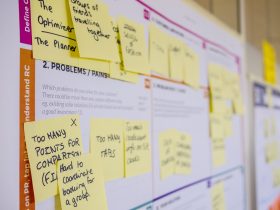In the era of fleeting trends and Instagram-worthy splurges, the importance of ethical financial education cannot be overstated. As we sail through the tempestuous waters of consumerism and capitalism, it becomes increasingly vital to equip our youth with the tools to navigate the choppy waves of personal finance responsibly. In my four-year journey of unravelling the nuances of ethical spending, I have witnessed the transformative power of ethical financial education on shaping student outcomes. So, grab your life jacket, and let’s sail through the captivating world of ethical finance together!

Imagine this: a high school student, let’s call her Sarah, meticulously budgeting her pocket money to support local businesses rather than falling prey to the glitzy charm of multinational corporations. Sarah’s knowledge of the intricate relationship between her spending habits and the well-being of her community isn’t just a stroke of luck; it’s the result of a robust ethical financial education curriculum. Ethical financial education goes beyond mere numbers; it instills a sense of responsibility and awareness, fostering a generation of financially conscientious citizens.
Take the case of Franklin High School, where a comprehensive program was introduced to infuse ethical financial education into the curriculum. Instead of mind-numbing lectures on compound interest and balance sheets, the students were encouraged to embark on a ‘money-saving challenge.’ The challenge involved adopting sustainable spending habits, such as choosing eco-friendly products or supporting businesses that uphold fair trade practices. The results were astounding, with a significant percentage of students displaying a heightened sense of empathy towards the environment and the global workforce.
However, the impact of ethical financial education extends far beyond the confines of the classroom. It infiltrates the very fabric of a student’s everyday life, influencing their decisions at the local grocery store, the neighborhood farmer’s market, or even during their online shopping sprees. A prime example is the story of young Michael, who, armed with the knowledge of the detrimental effects of fast fashion on the environment and labor exploitation, started a small-scale thrift store in his garage. Not only did this initiative empower Michael as a budding entrepreneur, but it also resonated with the principles of ethical spending ingrained in him through his school’s financial education program.
One might argue that ethical financial education is a daunting task, especially when students are bombarded with flashy advertisements and the allure of consumerism. However, integrating real-life examples and interactive activities can transform this seemingly arid subject into an engaging and empowering experience. Consider the ‘Sustainable Saturday’ initiative at Maplewood Middle School, where students were encouraged to research and present on sustainable business models that prioritize environmental conservation and social responsibility. This hands-on approach not only piqued the students’ curiosity but also instilled in them a profound understanding of the impact of their financial choices on the greater world.
Yet, the journey toward ethical financial literacy isn’t bereft of challenges. It demands a nuanced understanding of cultural and socioeconomic diversity. What might be considered an ethical spending choice in one community might not resonate with another. For instance, the concept of ‘buying local’ might hold different implications for students in a rural setting compared to those in an urban environment. Hence, the curriculum must be tailored to address the unique needs and contexts of diverse student populations, fostering inclusivity and a comprehensive understanding of ethical spending on a global scale.

The digital age, with its endless stream of e-commerce platforms and digital payment methods, poses yet another hurdle in the pursuit of ethical financial literacy. How does one navigate the labyrinth of online consumerism while upholding ethical values? This question is not just a rhetorical musing; it’s a pressing concern for educators and parents alike. Platforms like ‘Ethical E-Wallets 101’ at Oakridge High School sought to bridge this gap by educating students on the importance of choosing e-wallets that support ethical businesses and donate a percentage of their revenue to social causes. This not only fostered responsible online spending habits but also instilled in the students a sense of digital citizenship and ethical responsibility in the virtual realm.
The impact of ethical financial education isn’t confined to the present; it casts a profound shadow on the future. As the students of today evolve into the decision-makers and leaders of tomorrow, their ingrained ethical consciousness will steer the course of global economies and social structures. Imagine a future where CEOs and policymakers uphold the principles of ethical finance, where the stock market is not just a den of profit-hungry wolves but a space that champions sustainable business models and equitable wealth distribution. This future isn’t a far-fetched utopia; it’s a tangible reality we can shape through the ethical financial education of our youth today.
In conclusion, the ripples of ethical financial education transcend the boundaries of academia, seeping into the realms of personal responsibility, community empowerment, and global sustainability. It is not just about balancing the books; it’s about balancing the scales of social justice and environmental stewardship. So, let’s continue to nurture this seed of ethical consciousness within the hearts and minds of our future leaders, for they are the harbingers of a more equitable and sustainable world.
As we bid adieu to the captivating world of ethical finance for now, let’s remember that every penny spent is a ballot cast for the kind of world we wish to inhabit. So, let’s spend it wisely, with our hearts and wallets aligned in the pursuit of a brighter, more ethical tomorrow.
Bonnie Henderson, signing off.

































